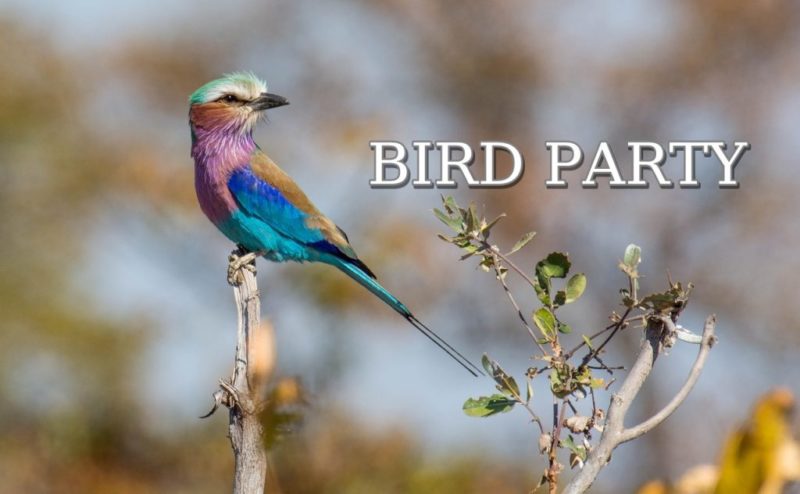Bird Party in the South African Bush
Bird parties are the ideal find for avoid birders as they provide concentrated viewing of varied species
Birds of different species frequently associate in mixed feeding parties and are found together in what is known as a ‚bird party‘.
Generally the species in a bird party are predominantly insect eaters and each level or strata of birds feeding in vegetation benefits from the habitat of the one above it, be it that they reap what the bird above them drop or that they inadvertently ‚herd‘ insects into one another´s grasp.
The collective feasting effort of a bird party affords all the birds in the area shared vigilance and many eyes and ears are better able to look out for danger and provide early warning of it. In the case of predators like a snake or small raptor, many different species of bird may then cooperate to mob it and chase it away.
Although most species attending bird parties are insectivorous, seed-eaters like blue waxbills and doves also frequently form part of the action, as do some frugivores (fruit-eaters) and omnivores (meat and plant-eaters).

A common food resource generally attracts the birds to form mixed parties and in the case of fruiting of flowering trees, not only will the frugivorous and nectarivorous birds be drwan to the location but too will insects.
In turn, the insect-eating birds arrive (and possibly also a predatory bird species occasionally). While the birds in the higher levels of vegetation move and fees they may knock seeds down to the smaller seed-eaters below.
Bird parties are a type of interspecific (between species) allelomimentic behavior. Allelomimentic behavior relates to ‚copy-cat‘ behavior practised predominantly by gregarious bird species. For example, blue waxbills form monogamous pairs but during the day they feed together in flocks for greater protection, keeping constant contact with each other through high-pitched ‚tswees‘. If one bird suddenly flies, the entire flock will also fly away.

Red-billed queleas take this to the extreme and droves of literally thousands of birds respond to a change in direction by just one of their members and collectively they manage the most perfectly synchronised flight, appearing as ever-changing dark shapes over the bushveld.
Cooperative breeders such as arrow-marked babblers call in a allelomimetic fashion – one bird begins and the others join in, contagiously producing a loud group vocalisation that rises and then descends in volume.

As far as bird parties are concerned, one or two birds begin feeding earnestly and other species notice this and join in ‚mimicking‘ the originals birds‘ behaviour until a large party forms.
Bird parties are ideal find for avid birders as they provide concentrated viewing of varied species.
The commonest in bird parties in the Lowveld include the birds illustated on this page as well brubru, green-winged pytilias, golden-breasted and cinnamon-breasted buntings, white-bellied sunbird, orange-brested bush-shrike and Retz’s helmet-shrike.

